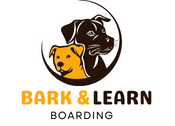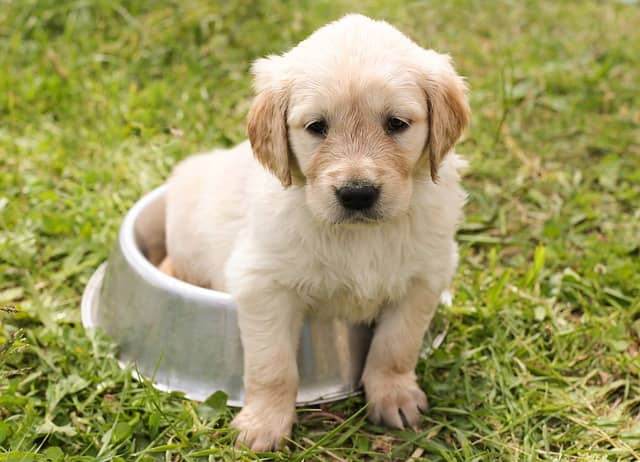Are you going to start potty training your rescue dog?
If yes, then you are at the right place.
Welcoming a rescue dog into your home is a heartwarming experience. These furry companions often come with a history, and while they bring immense joy, they may also require some extra patience and guidance, especially in potty training.
Whether you’ve adopted a puppy or an older dog, potty training can be challenging yet rewarding. In this guide, we’ll discuss effective strategies and tips for successfully potty training your rescue dog.
Understanding Your Rescue Dog’s Background:
Before diving into potty training, it’s crucial to consider your rescue dog’s background. Many rescue dogs come from unknown or unstable environments, which can affect their behavior and habits. Some may have never received proper potty training, while others may have learned bad habits due to neglect or inconsistent training methods.
Take the time to observe your rescue dog’s behavior and cues. Understanding their background can provide valuable insights into their needs and help tailor your approach to potty training.
Steps and Considerations for Potty Training a Rescue Dog:
Follow the steps for the best results.
Establishing a Routine for Potty Training a Rescue Dog:
Consistency is vital when potty training any dog, but it’s especially important for rescue dogs who may be adjusting to a new environment. Establishing a routine helps your dog learn when and where to go potty.
Start by taking your dog outside to the designated potty area first thing in the morning, after meals, playtime, and bedtime. Use verbal cues such as “go potty” to help them understand what is expected of them. Praise and reward your dog immediately after they are eliminated in the appropriate area to reinforce good behavior.
Supervision and Management of Potty Training a Rescue Dog:
Until your rescue dog is fully potty trained, it’s essential to supervise it closely indoors. Keep them confined to a small area or use a crate when you cannot watch them. This prevents accidents and helps teach them to hold their bladder until they can go outside.
If you catch your dog in the act of eliminating indoors, interrupt them with a sharp “no” and immediately take them outside to their potty area. Avoid punishing your dog for accidents afterward, creating fear and confusion.
Be Patient and Understanding:
Potty training takes time, especially for rescue dogs with ingrained habits or fears. Be patient with your dog and understand that setbacks are normal. Avoid scolding or punishing your dog for accidents, as this can undermine their progress and trust in you.
Instead, focus on reinforcing good behavior and addressing any underlying issues that may be contributing to accidents, such as anxiety or medical problems. Consistency, patience, and positive reinforcement are essential to potty training your rescue dog.
Positive Reinforcement:
Positive reinforcement is a powerful tool in potty training. When your rescue dog successfully eliminates outside, praise and reward them with treats or verbal praise. This encourages them to repeat the behavior. Conversely, avoid punishment or scolding for accidents indoors, as this can create fear and confusion.
Accident Management for Potty Training a Rescue Dog:
Accidents are inevitable during the potty training, particularly with rescue dogs who may be adjusting to new surroundings. When accidents occur, clean the area thoroughly with an enzymatic cleaner to eliminate odors that may attract your dog back to the same spot. Avoid using ammonia-based cleaners, as they mimic the scent of urine.
Crate Training:
Crate training can be valuable in potty training, providing your rescue dog with a safe and secure space when you cannot supervise. Introduce the crate gradually, making it a positive and comfortable environment with cozy bedding and toys. Use the crate for short periods initially and gradually increase the duration as your dog becomes more accustomed to it.
Monitoring Food and Water Intake:

Monitoring your rescue dog’s food and water intake can help predict when they’ll need to go outside. Establish regular mealtimes and avoid free-feeding, making it challenging to predict when they’ll need to be eliminated. Limit water intake in the evening to reduce nighttime accidents.
Seek Professional Help if Needed for Potty Training a Rescue Dog:
If you’re struggling to potty train your rescue dog despite your best efforts, don’t hesitate to seek professional help. A certified dog trainer or behaviorist can provide personalized guidance and support tailored to your dog’s needs.
Also, consult with your veterinarian to rule out any medical issues affecting your dog’s ability to control their bladder or bowels. With the proper guidance and support, you can overcome challenges and help your rescue dog become a well-behaved and happy family member.
Conclusion:
Potty training a rescue dog requires patience, consistency, and understanding. By establishing a routine, using positive reinforcement, and practicing patience, you can help your furry friend master this essential skill. Remember that every dog is unique, and progress may take time. Celebrate small victories along the way, and cherish the bond that grows as you navigate this journey together. With dedication and love, you and your rescue dog can conquer potty training and embark on a lifetime of adventures together.
FAQs:
How long does it take to potty train a rescue dog?
Potty training timelines can vary depending on several factors, including the dog’s age, breed, past experiences, and consistency in training. While some dogs may quickly pick up on potty training, others may require more time and patience. On average, it can take anywhere from a few weeks to a few months to fully potty train a rescue dog.
My rescue dog was potty trained in their previous home. Why are they having accidents in my home?
Transitioning to a new environment can be stressful for dogs, leading to accidents even if they were previously potty trained. Changes in routine, surroundings, and household dynamics can all contribute to accidents. Be patient and consistent with training; your dog should adjust over time.
What should I do if my rescue dog has an accident indoors?
Accidents are a normal part of the potty training process, especially with rescue dogs who may be adjusting to a new environment. Avoid punishment or scolding when accidents occur, as this can cause fear and confusion. Instead, clean up the mess calmly and reinforce the desired behavior by taking your dog outside immediately afterward.
Should I use pee pads or newspapers for potty training my rescue dog?
Pee pads or newspapers can be helpful for potty training, especially if you live in an apartment or have limited outdoor access. However, remember that using pee pads indoors may confuse your dog about where it’s acceptable to go potty. If you do use pee pads, gradually transition your dog to going potty outdoors once they understand the concept.
My rescue dog is afraid to go potty outside. What should I do?
Fear of going potty outdoors is common in rescue dogs, especially if they have had negative experiences. Be patient and supportive, and gradually introduce your dog to outdoor potty breaks. Start by spending time in a safe, familiar area and progressively expand to new environments. Use positive reinforcement to build your dog’s confidence and make outdoor potty breaks a positive experience.
Should I restrict my rescue dog’s water intake to prevent accidents?
While it’s essential to monitor your dog’s water intake, especially before bedtime, restricting water too much can lead to dehydration and other health issues. Instead of limiting water, focus on establishing a consistent potty routine and taking your dog outside regularly, especially after meals and naps.
My rescue dog is older. Is it too late to potty train them?
It’s never too late to potty train a dog regardless of age. While older dogs may take longer to learn new habits, they can still be potty trained with patience, consistency, and positive reinforcement. Adjust your training methods to accommodate your dog’s age and abilities, and be prepared for gradual progress.
Should I use a bell or other cues to signal potty breaks for my rescue dog?
Using a bell or other cues to signal potty breaks can be an effective training tool for some dogs. Teach your dog to ring the bell when they need to go outside by associating it with potty breaks and rewarding them for using it. This method can help communicate your dog’s needs and reinforce their potty training routine.

